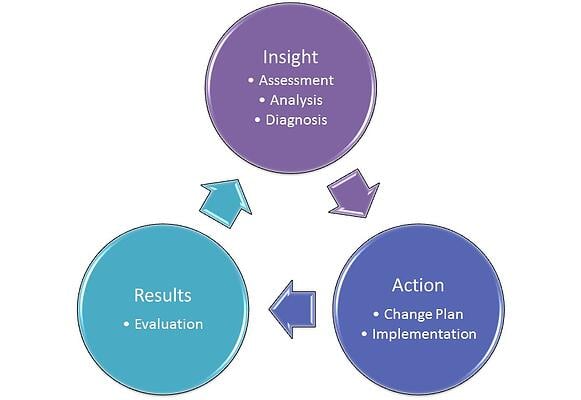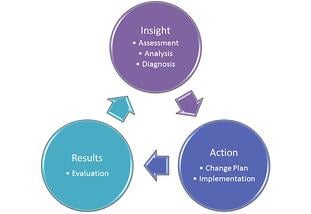CEO Blog - Advice for CEOs on growth and scaling
Cracking the Code of Organizational Change

 It was 1996 when John Kotter first published Leading Change and told us that 70% of all major change efforts by businesses fail. Nearly two decades later there is little evidence that any improvement has occurred, and this 70% failure rate has become axiomatic in business development and change management circles. Despite some individual successes, change remains difficult—and few companies manage change successfully.
It was 1996 when John Kotter first published Leading Change and told us that 70% of all major change efforts by businesses fail. Nearly two decades later there is little evidence that any improvement has occurred, and this 70% failure rate has become axiomatic in business development and change management circles. Despite some individual successes, change remains difficult—and few companies manage change successfully.
Organization change is a strategic imperative in today’s fast-paced business environment. Unfortunately, in the pursuit of change and trying to be the best, CEO’s and their executive team frequently chase after the latest and greatest idea. They lose focus and become mesmerized by all the advice available in print and online about why companies should change, what they should try to accomplish, and how they should do it. This proliferation of recommendations often leads to failure.
Cracking the Code of Change
Too often executive teams rush headlong into action by trying to implement various solutions—tools for team building, communication skills training or leadership development programs—rather than searching for expertise to work with them to first identify the company’s particular need for change. I suggest the best way to stop this from happening is to follow a rather basic and insightful Organizational Development process of INSIGHT-ACTION-RESULTS.
Don’t Skip Ahead of Insight - Connect Change to Business Strategy
- Assessment and Analysis: Successful change is always data driven and requires that we take the time to gather information and analyze data.
- Diagnosis: Successful change is built on your organization’s strengths and addresses your organization’s needs and weaknesses, not some other company’s strengths and weaknesses.
Successful change requires that you have a clear strategic vision—a genuine business case—for the change that provides purpose and direction to the change. But in the rush to do something, it is easy to skip over insight stage—the stage of assessment, analysis and diagnosis—to the action stage by proposing solutions without having worked to gather information about your organization and without having identified the specific strengths and weaknesses of your organization. In the hope of standing out among all those who are clamoring for your attention, you may run the risk of not developing your business case for the change.
The insight stage creates real value for an executive team, and a business case for change can be truly developed. The information uncovered here makes all the difference in terms of success. Making changes without knowing why your company needs that change or how it will benefit from that change—that is, without having a clear business case for change that everyone understands—is a waste of your time and resources. Moreover, changing just to be part of the latest fad is counterproductive; doing so lowers morale and increases cynicism. Change for change’s sake is a recipe for failure. Pursue change only in the context of a clear business goal.
Although managing change is difficult, implementing these few tried and true principles can help you improve your organization’s success. Everyone involved must understand the business case for whatever change you are considering. Otherwise, your people will only focus on what they have to lose rather than on what they have to gain. They might comply with the change initially, but they will soon revert to the old way of doing things. I have found it useful to work with outside resources at this stage to get a fresh perspective on the challenges and approaches.
Topics: Business Leadership and Strategy, Business Planning, CEO Choices
Sun, Mar 10, 2013- Press Releases
- Careers
- Case Studies
- Marketing Consultant Company
- Marketing Strategy Consultants
- Marketing Plan Consultants
- B2B Marketing Consultants
- Virtual CMO
- Marketing Consultant Outsourcing
- Fractional CMO
- What is a Fractional CMO
- Healthcare Marketing Consultant
- Marketing Consultant Houston TX Texas
- Marketing Consultant Texas TX
- Marketing Consultant Bay Area
- CEO Blog
- Ebooks Plus
- Executive Marketing Consultants
- Product Marketing Consultants
- B2C Marketing Consultants
- Virtual Marketing Consultants
- Senior Marketing Consultants
- Temporary CMO
- Hire a CMO
- Fractional CMO Salary
- Fractional CMO Responsibilities
- Marketing Consultant Austin TX Texas
- Marketing Consultant Dallas TX Texas
- Marketing Consultant San Antonio
- Helping Private Equity
- Private Equity Blog
- Leadership Team
- Privacy Policy
- Business Marketing Consultants
- Strategic Marketing Consultants
- Marketing Technology Consultants
- Sales and Marketing Consultants
- CMO Job Description
- CMO Salary
- Fractional CMO Agency
- Fractional CMO Services
- CPG Marketing Consultant
- Marketing Consultant San Diego
- Partners
Houston, TX 77056
© 2023 Chief Outsiders



